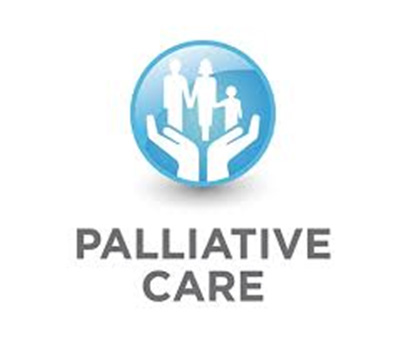
PCR test procedures are often used to detect infectious diseases, including HIV. These tests are more reliable and cheaper than rapid antigen testing. However, PCR tests have a variable sensitivity. It is dependent on the patient group and the sample type. Some tests are sensitive to 90% or more, while others are less sensitive.
RT-PCR is the gold standard for detecting COVID-19
The gold standard for COVID-19 testing is the reverse transcription-polymerase chain reaction (RT-PCR). This test is performed on respiratory specimens that have been collected by healthcare professionals. As an alternative highly sensitive assay, droplet digital PCR is growing in popularity. It is important to note that droplet digital PCs require trained technicians and require the collection of respiratory specimens by healthcare workers.
The RT-PCR is a real-time reverse transcription polymerase chain reaction (PCR) method for detecting the presence of the COVID-19 virus. The test detects the presence SARS-2-CoV-2 nucleic acid in the upper and lower respiratory tracts.

RT-PCR proves to be more efficient than rapid antibody testing
RT-PCR is a method that detects bacteria and viruses. Researchers tested two different methods. Each method had its own specificity, sensitivity and limitations. RT-PCR showed a higher sensitivity and specificity than NAAT. The results were consistent with patient-reported symptoms.
Multiple scenarios were used in order to compare the two methods. The RT-PCR test took 24 hours to complete and the time elapsed following the test. The RA was however performed at the time of entry and exit.
RT-PCR is more cost-effective
RTPCR is a technique that uses polymerase chains reaction to amplify genetic material in a specimen. The PCR reaction uses single stranded DNA. Primers are used to make sure that the DNA analyzed matches the species. You can then quantify the PCR results.
RT-PCR is cheaper for a variety of gene expression tests, and it is quicker and more precise than end-point techniques. However, this method is not without risks. You should be aware of the potential for false results and follow the instructions carefully. A negative result can be given for a disease, even though the person has never been exposed. Follow the instructions carefully and consult your healthcare provider to request a RTPCR test.

Problems with sample quality or sample evaluation
A PCR test's most important aspect is its sample quality. Poor sample evaluation can lead to poor results. Poor assay design and sub-optimal test conditions could lead to poor sample quality. These problems can be difficult-to-detect and often require further investigation.
FAQ
What is the value of the health care system
The health care system is an important part of any country's economy. It makes people live longer and more healthy lives. It also creates employment for nurses, doctors, as well as other medical professionals.
Health care systems help ensure everyone has access to quality healthcare services, regardless of income level.
It is important to understand how healthcare systems work if you're interested in a career as a nurse or doctor.
What does the expression "healthcare" refer to?
Providers of health care are those who provide services to maintain good mental and physical health.
Who is responsible for public health?
All levels of government have a role in public health. Local governments control roads, schools, parks, and recreation facilities. The laws and regulations governing food safety, workplace safety as well as consumer protection are enacted by both the national and state governments.
Statistics
- Price Increases, Aging Push Sector To 20 Percent Of Economy". (en.wikipedia.org)
- For the most part, that's true—over 80 percent of patients are over the age of 65. (rasmussen.edu)
- The healthcare sector is one of the largest and most complex in the U.S. economy, accounting for 18% of gross domestic product (GDP) in 2020.1 (investopedia.com)
- Consuming over 10 percent of [3] (en.wikipedia.org)
- Healthcare Occupations PRINTER-FRIENDLY Employment in healthcare occupations is projected to grow 16 percent from 2020 to 2030, much faster than the average for all occupations, adding about 2.6 million new jobs. (bls.gov)
External Links
How To
What are the Key Segments of the Healthcare Industry?
The major segments of the healthcare sector include diagnostics, pharmaceuticals, diagnostics and biotechnology, as well as therapeutics, health IT, medical equipment and medical devices.
Medical devices include blood pressure monitors, defibrillators, stethoscopes, ultrasound machines, etc. These products are typically used to diagnose, prevent, and treat diseases.
Pharmaceuticals are medicines that are prescribed to cure disease or relieve symptoms. Antibiotics, antihistamines (or contraceptives), are just a few examples.
Diagnostics are laboratory tests used to detect illness and injury. There are many types of diagnostics: blood tests; urine samples; CT scans; MRI scans; X-rays.
Biotechnology is the use of living organisms, such as bacteria, to create useful substances that can then be applied to humans. These include insulin, vaccines and enzymes.
Therapeutics refer to treatments given to patients to alleviate or treat symptoms. These therapies can include drugs or radiation therapy.
Information technology for health is a category of computer software that helps physicians and their teams manage patient records. It helps doctors track what medications are being taken and when they should be taken.
Equipment used in the diagnosis, treatment, and monitoring of medical conditions or illnesses is called medical equipment. Dialysis machines, pacemakers and ventilators are just a few examples.